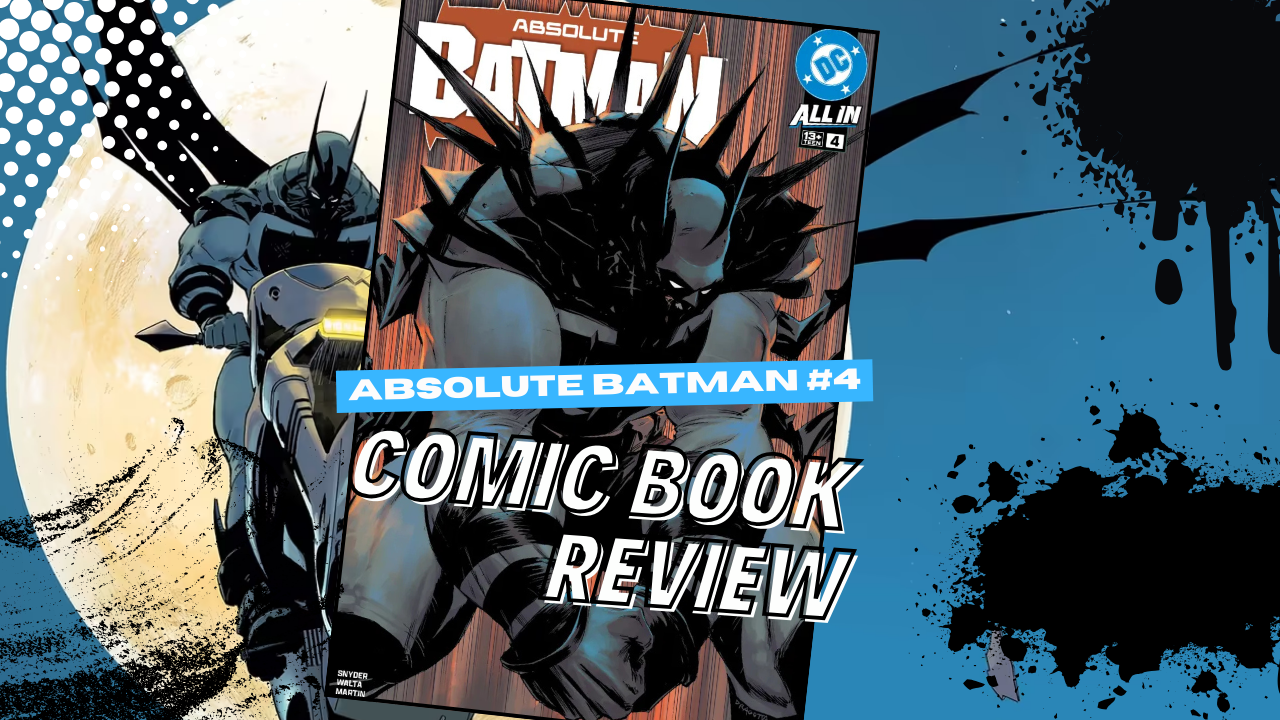Scott Snyder and Gabriel Hernández Walta continue to push the boundaries of Batman lore in Absolute Batman #4, delivering a masterful reinterpretation of the Dark Knight’s origin. This issue doesn’t just revisit the early days of Bruce Wayne’s transformation into Batman—it reinvents them with fresh psychological depth and a sharp commentary on corruption and justice.
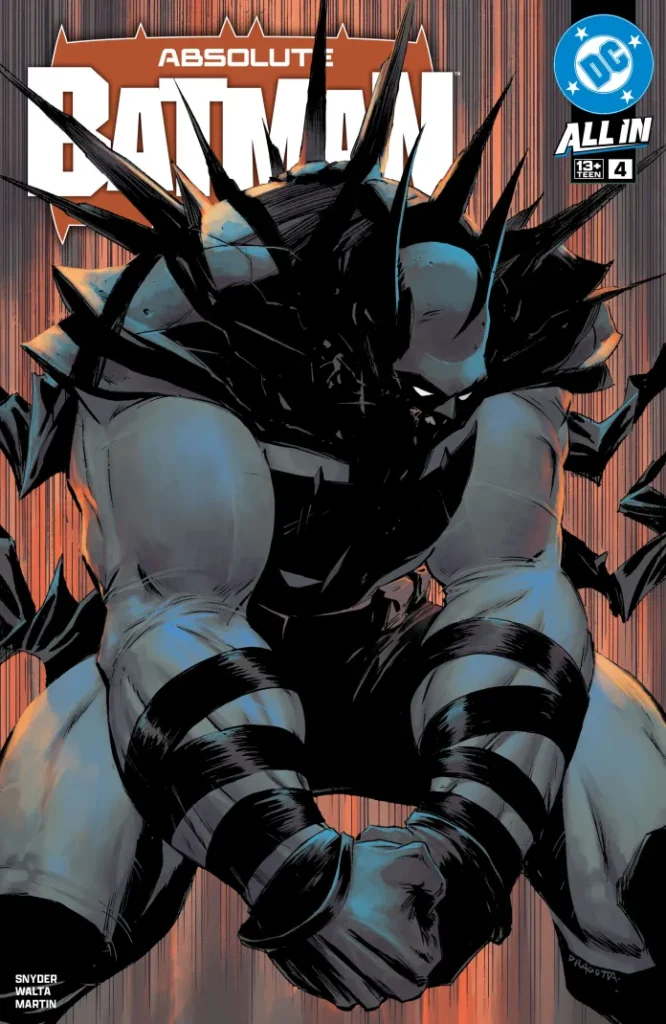
Snyder crafts an intricate narrative that weaves through three pivotal events in Bruce’s life: his courtroom confrontation with his parents’ killer, a heartfelt conversation with his father during a childhood science competition, and his first, faltering year as Gotham’s vigilante. Each timeline contributes to the thematic core of the story, revealing how Bruce’s ideals and trauma shaped his decision to become Batman.
Unlike previous retellings, this origin story doesn’t merely focus on Bruce’s struggles with doubt—it explores his anger, his fear, and his initial desire to wield terror as a weapon. His prototype suit, complete with fangs and a vampiric aesthetic, is a striking metaphor for his early rage-driven approach. However, the story artfully shows Bruce choosing to rise above pure fearmongering to become a symbol of justice and hope.
Snyder’s dialogue shines brightest in Bruce’s flashback conversations with his father. Their discussion about bats’ unique traits adds a meta-layer, subtly reflecting Batman’s role in the world. It’s a poignant reminder of why Bruce chose this symbol and what it represents: resilience, adaptability, and an ability to thrive in darkness.
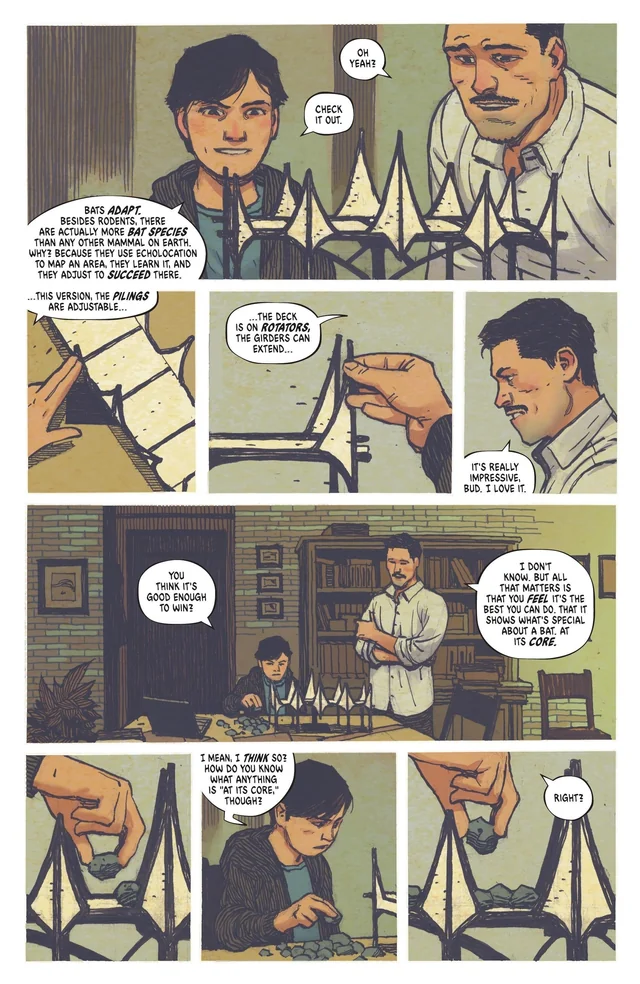
Gabriel Hernández Walta’s art perfectly complements Snyder’s introspective script. Gotham feels alive under his pen—grimy, oppressive, and teeming with character. The flashbacks, rendered with subtle shifts in tone and texture, feel distinct yet cohesive within the overall narrative.
Walta’s attention to detail elevates key scenes. The prototype Batman suit is a visual statement, blending gothic horror with the primal rage of a young Bruce Wayne. The action sequences, particularly a Batmobile-vs-truck moment, are dynamic and infused with dark humor, offering a brief respite from the story’s heavier themes.
Frank Martin’s colors add another layer of brilliance, balancing the grim tones of Gotham’s streets with the vibrant energy of Bruce’s childhood flashbacks. His use of light and shadow enhances the emotional resonance of every panel, drawing readers deeper into Bruce’s psyche.
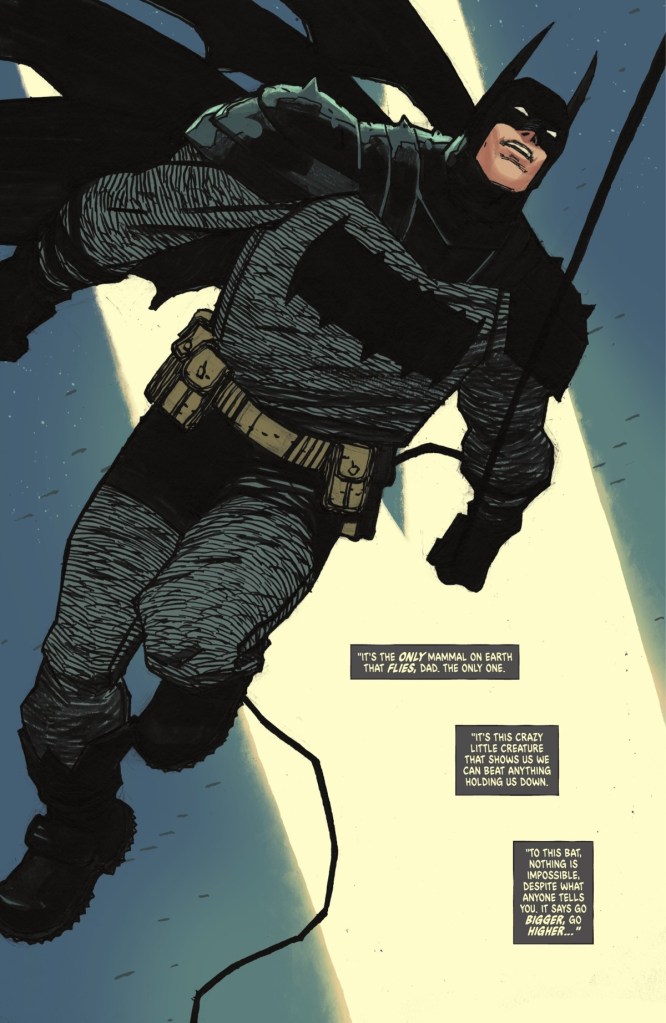
The typography of Bruce’s inner monologue deserves special mention. Echoing Todd Klein’s lettering in Batman: Year One, the cursive writing and paper-textured captions immerse readers in Bruce’s evolving mindset, providing a direct window into his thoughts and struggles.
What sets Absolute Batman #4 apart is its commentary on the current state of society. Snyder uses Bruce’s journey as a lens to explore broader issues of corruption and the human need for a rallying symbol in dark times. This Batman isn’t just fighting crime—he’s grappling with the moral and systemic decay around him, making his mission feel more relevant than ever.
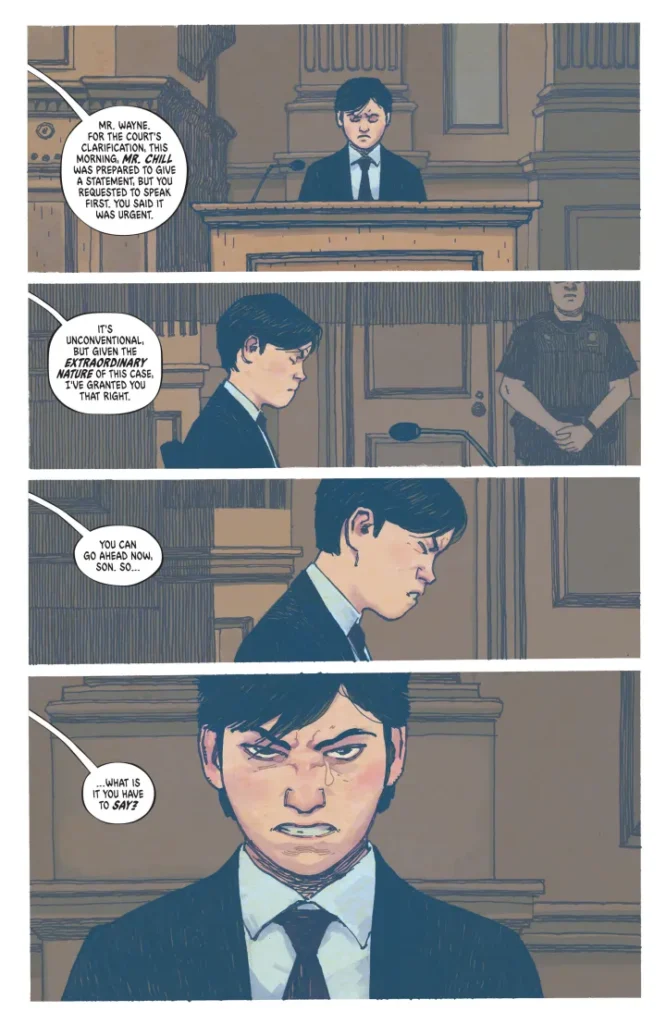
The issue also delves into Bruce’s relationship with his parents’ killer, hinting at an intriguing exploration of forgiveness, vengeance, and closure in future issues. This added layer of complexity keeps the story grounded, even as it leans into its more mythic elements.
One of the most memorable moments is the juxtaposition of Bruce’s fatherly advice about bats with panels showing Batman in action. This sequence beautifully captures the essence of comics as a medium, blending visual storytelling with introspective dialogue to create a profound emotional impact.
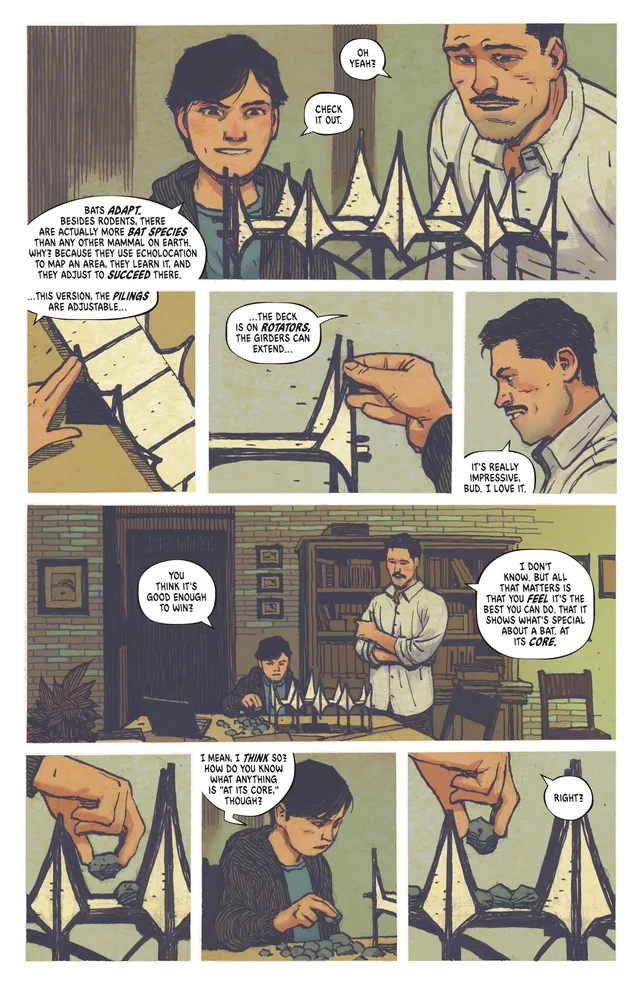
However, the issue’s ambition occasionally leads to minor stumbles. The cliffhanger, while intriguing, feels slightly vague in its execution. Additionally, some readers might find the exposition-heavy approach a bit dense, though it’s balanced by the rich character work and dynamic visuals.
Absolute Batman #4 is a triumph that honors the legacy of the caped crusader while carving out new territory. It’s a bold reinterpretation of Batman’s origin, blending psychological insight, social commentary, and thrilling action into a cohesive whole.
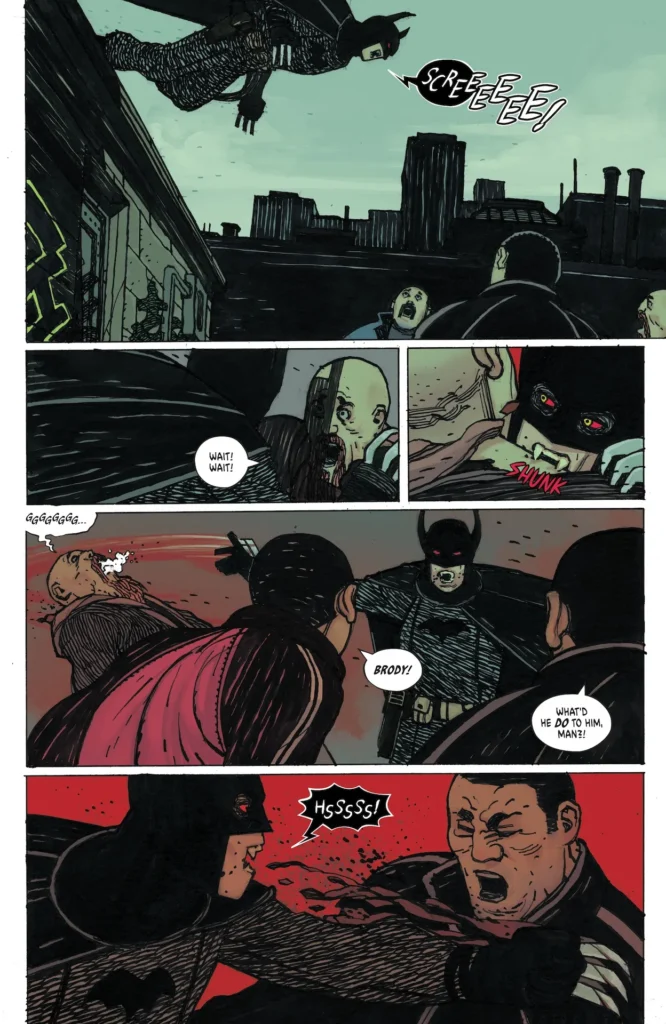
Whether you’re a longtime fan or new to Batman comics, this issue offers something for everyone. It’s a standalone character study that delves deep into what makes Batman an enduring symbol, while also setting up tantalizing possibilities for future stories.
Snyder, Walta, and Martin have crafted a masterpiece that’s equal parts homage and innovation, proving once again why Batman remains one of the most compelling characters in all of fiction.

